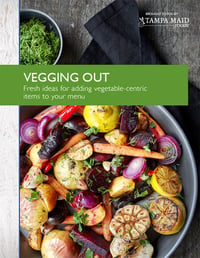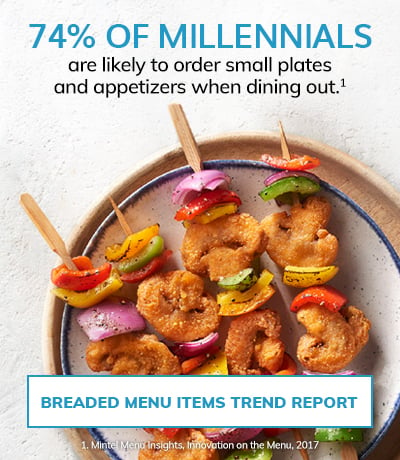These strategies will help your full-service operation boost food and beverage sales and increase customer satisfaction.
The Power of Food and Beverage PairingFine-dining restaurants have long leveraged the successful power of food and beverage pairing, yet few other full-service operators are taking advantage of the opportunity.

“I’d like to assume that the beverage menu is created at least in part to provide a nice complement to the food menu, but too often the twain don’t meet,” Nancy Kruse, president of The Kruse Company, said in a recent Nations’ Restaurant News article. “The bar and the dining room remain silos, and money is being left on the table.”
Bundling benefits
Pairing food and beverages that work well together is an easy way for operators to add interest and increase check averages — and opens the possibility for even greater food and beverage sales volumes and improved profits. Connecting the kitchen and the bar can also:
- Increase profits. Margins on food and beverage pairing usually offers a larger return to a restaurant than a beverage alone.
- Reduce customer decision fatigue. Customers like choices but can become overwhelmed by too many, especially if they are uneducated about the vast array of wines or beers available. Pairings can help to solve this problem.
- Improve customer experience. Pairings help to deliver a better customer experience, which leads to a higher customer retention rate.
- Differentiate from the competition. With few full-service operators currently taking advantage of food and drink pairing, doing so sets a brand apart — a huge plus in an especially challenging time for restaurateurs.
When it comes to deciding which food to pair with a beverage, go high, go low or strive for something in between.
- Don’t limit pairings to elevated fare. Successful food and beverage pairing doesn’t require multi-page wine lists or elegant entrées. For example, beer is a perfect match for pub-style grub. Bar managers and chefs can work together to identify the right beer for everything from beer battered shrimp to seafood stuffed mushrooms. Meanwhile, they might offer craft cocktails with ingredients that will complement plant-centric menu items, such as a shareable appetizer of thick fried green tomato slices or a veggie patty topped with fresh slices of avocado on a brioche bun.
- Consider non-alcoholic offerings. The trend toward non-alcoholic beverages is growing, especially among younger generations. A 2018 report from Berenberg Research found that younger consumers are drinking less alcohol than older generations, and many are even abstaining from alcohol. Offering inventive, food-friendly beverages — from flavored seltzers and teas to lightly fermented kombucha and mocktails — has the potential to excite these and other customers and lead to increased check averages.
• Educate staff. Seventy-four percent of consumers believe that a knowledgeable staff is important to their brand experience, according to Oracle. So if you’re offering food and beverage pairing, you’ll want to make sure the staff is trained on all available beers, wines and cocktails — and why they work well with the food selections.
Effective marketing
Properly marketing beverages as food accompaniments helps drive sales of both. Here are five tips to get started:- Build wine, beer, cocktail or non-alcoholic drink lists to best leverage the food pairing trend.
- Start small. It’s possible to recommend a beverage for every main dish on your menu, but it might make sense to start small — perhaps with small plates, apps or bar-bite pairings menus. Beer is a good starter beverage, as consumer conversation about food and beer pairings has grown by triple digits on social media in recent years, according to Foresight Factory, a London-based consumer analytics firm.
- Provide value. Consumers still want a good value. Deliver on that expectation by offering food pairing promotions, such as those in which the cost of the package is slightly less than the cost of the two items separately.
- Make it easy. Add to the menu a description of each beverage alongside its food pairing. Make it even easier by using icons for beer, wine or cocktails.
- Collaborate. Consider partnering or associating with local or well-known brewers, wineries or spirit-makers. Affiliations give consumers more confidence and operators the opportunity to cross-promote or even co-host unique events.
Finally, remember that operations will be impacted any time the menu changes. Be sure to consider practical matters such as capacity. Can your bar staff handle mixing a slew of cocktails from scratch, which takes longer than pouring a glass of wine or beer? Or do you need to consider preparing batches in advance? Offering food and beverage pairing on only one slow night could eliminate capacity issues on a busy night, while also boosting food and beverage sales during downtimes.
As restaurants face greater challenges in today’s marketplace, full-service operators who take advantage of the trend toward food and beverage pairing are less likely to leave money on the table or see valued customers walk out the door.
Looking for more inspiration?
 See our infographic to see how these tips can be applied to your kitchen! Or download our Vegging-Out White Paper, to learn what consumers expect from meatless meals plus fresh ideas for adding vegetable-centric items to your menu.
See our infographic to see how these tips can be applied to your kitchen! Or download our Vegging-Out White Paper, to learn what consumers expect from meatless meals plus fresh ideas for adding vegetable-centric items to your menu.










